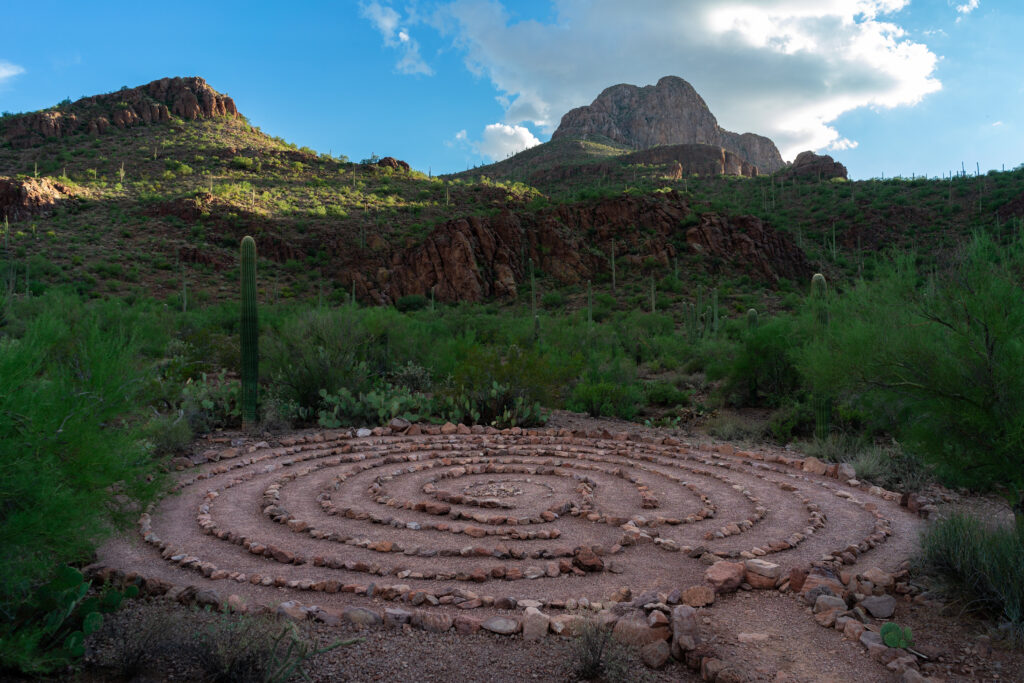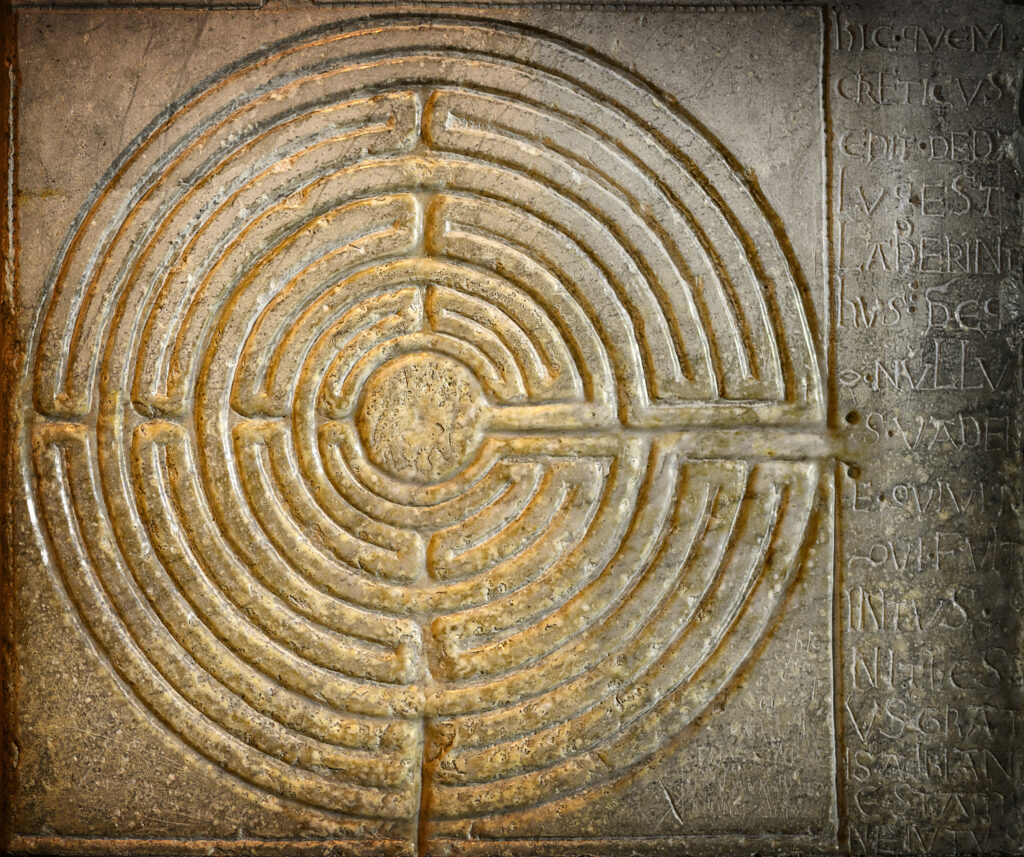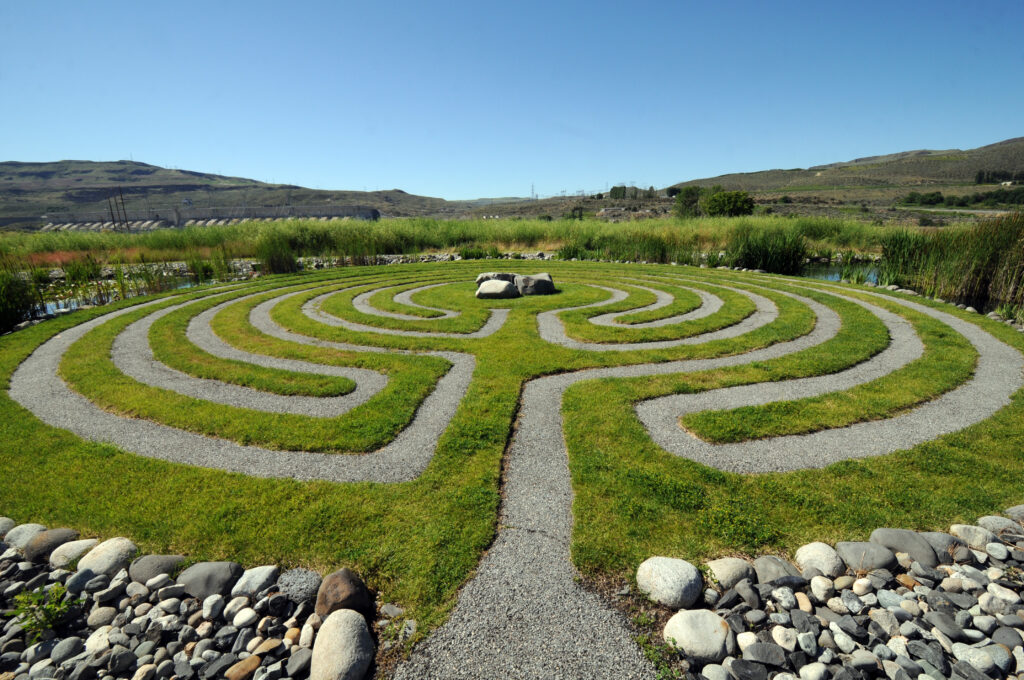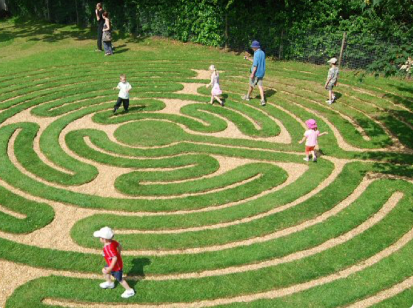Benefits
The Home Team
Don’t forget the all important benefit your labyrinth will provide you and your employees ….for when the day is over, or before it begins, the peace and tranquility of the labyrinth is there waiting for those intimate moments when no one else is around.
Successful retreat centers, be they small or large, meet the needs and challenges faced by the people who are drawn to them and there is much to be gained from the addition of a labyrinth in your retreat space….both for you and yours on a personal as well as business level and of course the lucky ones that visit and share that space with you and your labyrinth.
Visitors and Guests
Aside from the obvious benefits a labyrinth can provide a retreat space, many new labyrinth lovers can be spawned from one single personal experience. You may never be fully aware of how many circumstances of “paying it forward” may be the result of one persons experience on your labyrinth.
Many special programs can be developed around the labyrinth, allowing you to find an abundant array of ways to serve the needs of your community and guests. Local charities are marvelous benefactors when fund raisers are held utilizing the labyrinth along with some wonderful exposure for your retreat center as an added bonus.
If you are fortunate enough to find yourself located in an area where you are the only labyrinth or even one of only a handful, working with your local chamber and tourism association can be a win win situation for both enterprises in the form of a “place of local interest.”
Challenges
Monetary Requirements
The amount you spend on your labyrinth can run from a little to a lot and depends largely on what your budget will allow. There are excellent sources for new canvas labyrinths in a variety of sizes and design options; you may also be able to find a good used one in the size you are looking for . Canvas is a good option if you want to use indoor space for more than one function…dining hall by day, labyrinth hall by night. Canvas is also a good option for outdoor use; however, it cannot remain outside and does have some challenges when it comes to cleaning and storage.
Permanent labyrinths can be constructed in a large array of materials; brick pavers, painted concrete (some with radiant heating for walking during winter months), natural stone or rock, naturally lined pathways with herbs or shrubs…the list is endless and here again are in direct relation to the cost. Seed patterns are a great way to “do it yourself” and enlisting some volunteers for a labyrinth building project is the best way to save money. A good rule of thumb to ensure success and completion of your project is to remember that the larger the labyrinth and the more complicated the construction material, the longer and more costly the project will become.
Space Requirements
Determining the labyrinth design you desire along with the location you have in mind for its placement, is directly related to the space you will need to allocate for your labyrinth. The Chartres replica design is a full eleven circuit labyrinth which is laid out utilizing sacred geometry and will require over 40’ diameter for an accurate replica, while the classical labyrinth is more flexible and simplistic in its design. The classical design is perfect for you if you are limited in space, funds to build, or manpower to get the job done. The flexibility of the classical allows for the creation of a 3-5 or 7 circuit labyrinth and can be easily assembled utilizing a number of “on hand” items not to mention some very creative ones such as irrigation flags, string, sports field paint, etc. Keep in mind that the smaller the diameter of the labyrinth, the narrower the paths…this will be especially critical when considering handicap accessibility concerns.
Usage Requirements
How you intend to use your labyrinth relates directly to your decision making process:
- Is your facility petite or a mega center?
- How many people do you host at any one time?
- Is the center geared toward your own work or do you look to attract outside facilitators?
- Is your center secular or non-secular?
- Will the labyrinth be used for ceremonies & workshops or provide repose for casual walkers?
- Is your center for profit or not for profit?
These and many more questions may help you in the decision making process.






